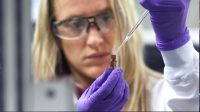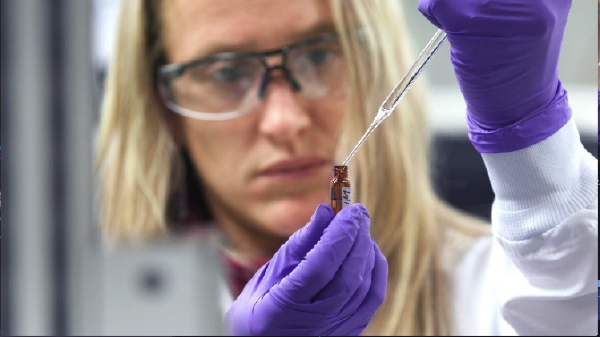With recent updates to ISO 10993-1 and the Medical Device Regulation (MDR) on track to replace Europe’s current Medical Device Directive in 2020, medical device manufacturers are scrambling to navigate the changes and develop their pre-clinical device testing strategies. Understand, this isn’t just a regulatory challenge, it’s a business challenge.
Check out the MedTech Intelligence series of EU MDR 2019 workshops and conferencesSeventy-eight percent of OEM regulatory and quality leaders say they don’t have a sufficient understanding of the EU MDR, according to a KPMG and Regulatory Affairs Professionals Society (RAPS) survey. What’s more, 41% have yet to evaluate the long-term measures and maintenance that will be required to successfully comply with the impending regulation.
With about 18 months until the MDR goes into effect (May 26, 2020) and the shrinking number of notified bodies, now is the time to act. With strategic planning and partnership, costly regulatory delays can be avoided.
ISO 10993-1 & MDR Requirements: What You Need to Know
The new and updated regulations place increased emphasis on the roles that robust data and complete evaluations play in ensuring medical device safety. ISO 10993-1, in particular, has increased the importance of materials characterization, physical and/or chemical information, and risk assessment in distinguishing biological endpoints. Regulators will be looking for chemical information, and, if sufficient information is not available, additional testing, like extractables and leachables (E/L) studies, will be

required. If you conduct extractables testing, you will need to use exaggerated extraction conditions that demonstrate your device has been sufficiently challenged. This should be done by using aggressive solvents representing a wide range of polarities, elevated temperatures and extended timeframes. Regulators will also expect that all chemicals are identified; if unknown chemicals are found in a chemistry report, you must be prepared for regulators to ask you to go back and complete the identification—a complete characterization of your materials cannot happen with “unknowns.”
With increased emphasis on chemical characterization, biocompatibility testing alone cannot be relied on to support device safety. While biocompatibility testing can be helpful in identifying local and systemic effects of your device in a living system, it only tells part of the story. Robust chemistry testing along with a toxicological risk assessment is needed to provide more specific information about chemicals at minute levels that could ultimately be harmful to patients.
For optimal results and adherence to ISO 10993-1 and MDR, your test plan should start with chemical characterization to inform the rest of the process.
1. Complete Physical and/or Chemical Information
- What it is: Chemical characterization tests identify all the component materials of a medical device. This list may include polymers, plasticizers, colorants, additives, processing aids, impurities and more. It is likely that an E/L study will be necessary, especially for products with prolonged or long-term exposure and/or products that are in contact with circulating blood. E/L studies expose the device materials to aggressive solvents, which are used to extract and determine what chemicals could leach from a device over time and at what amount.
- Why it matters: The purpose of materials characterization is to understand the full range of chemical constituents, especially those you did not anticipate and that may be harmful to patients.
2. Toxicological Risk Assessment
- What it is: Toxicological risk assessments establish the margin of safety for each chemical identified in a chemistry report. Unknowns must be added together and considered worst-case chemicals (e.g. mutagenic); as little as 1.5µg/device can result in an unfavorable assessment.
- Why it matters: This information is key to accurately identifying risks. The results from toxicological risk assessments should be used to guide which biological tests should be performed.
3. Biocompatibility Testing
- What it is: Biocompatibility testing looks at how your device reacts to living cells through both in vitro and in vivo assays. Often times, chemistry and risk assessments can work to meet some biocompatibility endpoints, such as genotoxicity and sub-acute/sub-chronic toxicity, reducing the need for additional testing and costly test article.
- Why it matters: Working with chemistry and risk assessment, biocompatibility provides valuable information, especially for local effects, to produce a complete data set to support the safety of your device.
Assemble Your Internal Team
Before partnering with a contract research organization (CRO) to carry out your pre-clinical device testing program, do some internal due diligence. Headaches and delays can be minimized with thoughtful planning and a cross-functional team that is apprised of the regulatory changes and business impact.
Start by gathering existing information on the chemical and additive materials that make up devices; this data will help you and your CRO evaluate what tests are necessary to verify safety and whether a gap analysis should be performed before testing begins.
Partner Up
Your CRO should work with your internal team to assess and recommend a testing program based on existing information you have and the risk of your device. With a proactive, planful and communicative approach, you will have a greater chance of accelerating the process and getting your devices in front of regulators before others—and not being sent to the back of the line.

Engaging a CRO is perhaps an obvious step, but it is not a trivial exercise. What follows is a list of questions you should ask to help you determine who to trust with your testing program.
First, ask potential CROs if they have in-house capabilities to perform all of the necessary biological assessments. Make sure they can demonstrate expertise in chemical characterization, toxicological risk assessment and biocompatibility testing. Enlisting a CRO that has expertise in all three capabilities under one roof increases efficiency, allows you to address systemic endpoints, and helps eliminate information gaps. If the potential partner does not provide all three services, you may be forced to outsource testing with two or more companies. A piecemealed approach to testing can lead to longer timelines, increased cost, miscommunication between parties, loss of information altogether and unknown impurities getting missed in your chemical reports.
You should also inquire about how often the CRO reports unknowns in their chemistry reports. Working with a chemistry partner that reports unknowns will be problematic. Find a team that has instrumentation sensitive enough for perform complete characterization. Many CROs claim to do E/L testing, but very few have the expertise or commitment required to identify all detected chemicals.
The regulatory deadlines will be here before you know it. Now is the time to reserve your spot in line for preclinical testing. Your success in getting your products to market will depend on thoughtful planning, partnership, and attention to detail.







